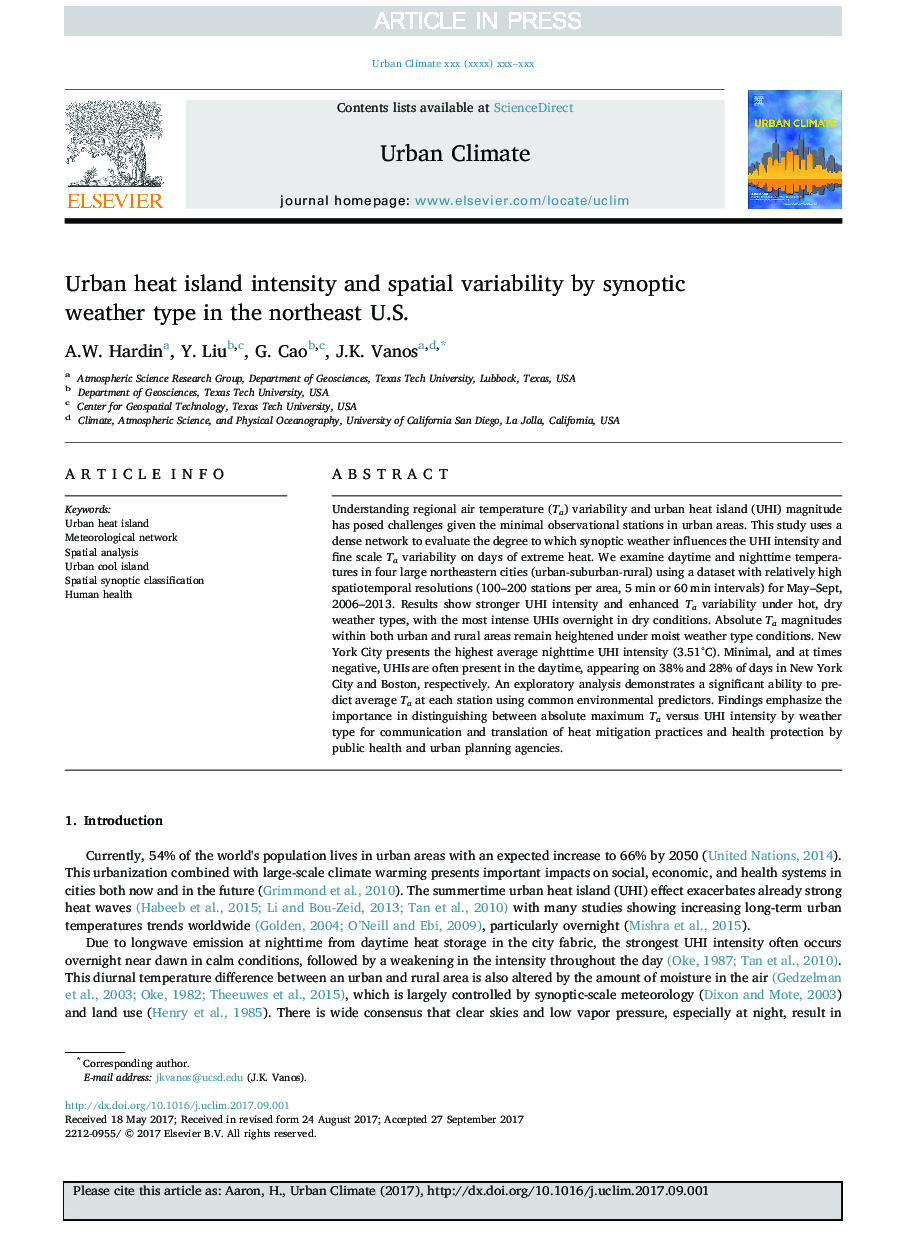| Article ID | Journal | Published Year | Pages | File Type |
|---|---|---|---|---|
| 6576916 | Urban Climate | 2018 | 16 Pages |
Abstract
Understanding regional air temperature (Ta) variability and urban heat island (UHI) magnitude has posed challenges given the minimal observational stations in urban areas. This study uses a dense network to evaluate the degree to which synoptic weather influences the UHI intensity and fine scale Ta variability on days of extreme heat. We examine daytime and nighttime temperatures in four large northeastern cities (urban-suburban-rural) using a dataset with relatively high spatiotemporal resolutions (100-200 stations per area, 5 min or 60 min intervals) for May-Sept, 2006-2013. Results show stronger UHI intensity and enhanced Ta variability under hot, dry weather types, with the most intense UHIs overnight in dry conditions. Absolute Ta magnitudes within both urban and rural areas remain heightened under moist weather type conditions. New York City presents the highest average nighttime UHI intensity (3.51°C). Minimal, and at times negative, UHIs are often present in the daytime, appearing on 38% and 28% of days in New York City and Boston, respectively. An exploratory analysis demonstrates a significant ability to predict average Ta at each station using common environmental predictors. Findings emphasize the importance in distinguishing between absolute maximum Ta versus UHI intensity by weather type for communication and translation of heat mitigation practices and health protection by public health and urban planning agencies.
Related Topics
Physical Sciences and Engineering
Earth and Planetary Sciences
Earth and Planetary Sciences (General)
Authors
A.W. Hardin, Y. Liu, G. Cao, J.K. Vanos,
